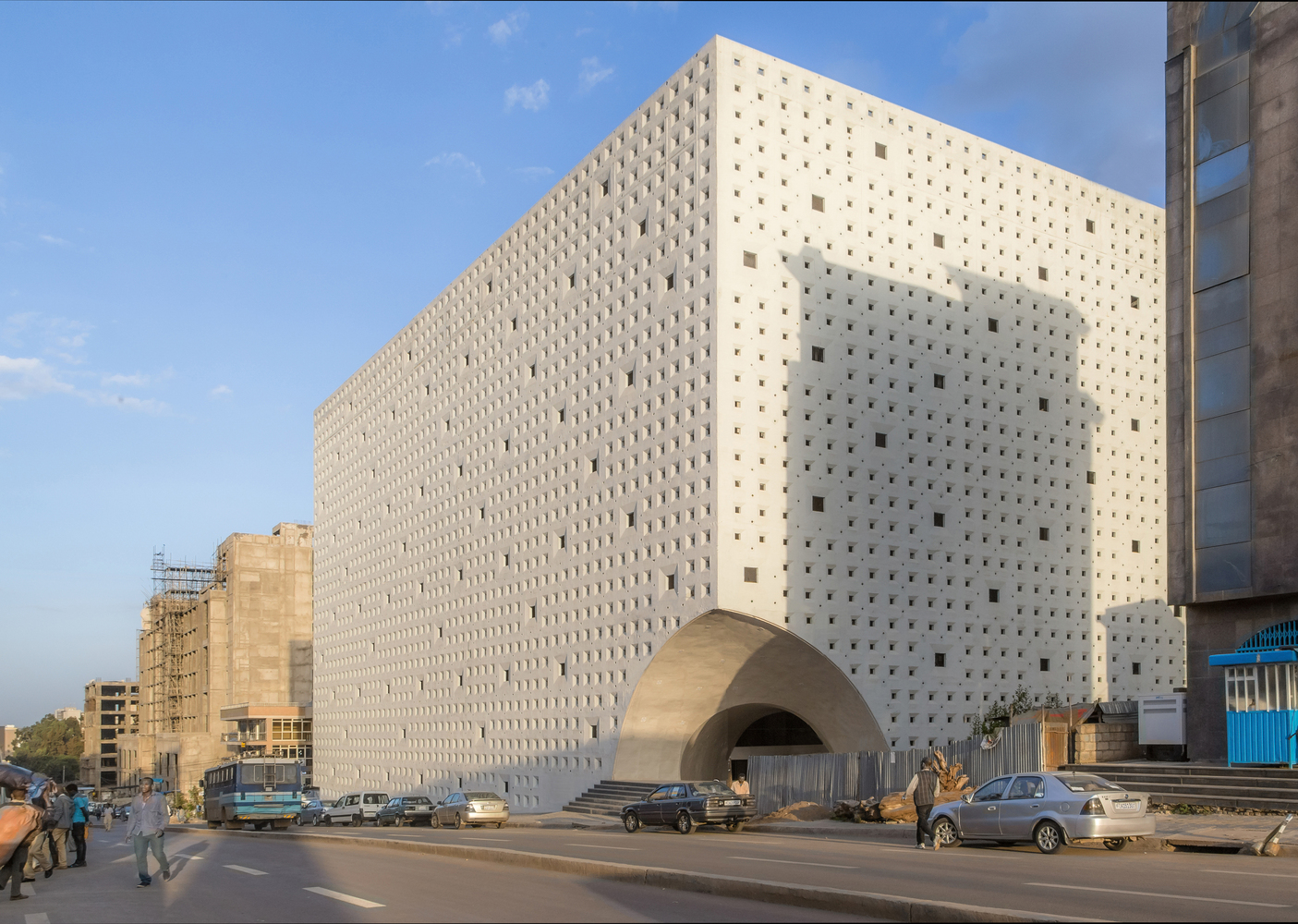The new perforated concrete shopping mall in Addis Ababa, Ethiopia
A behemoth new concrete market has risen in Addis Ababa, Ethiopia, and it manages to be both imposing and ethereal. Designed by Barcelona-based firm Vilalta Arquitectura and set to open this summer, the Lideta Mercato was originally intended to be a traditional shopping mall. But extensive research showed that the city’s climate made existing malls too hot.
Instead, the architects decided to design a multi-story building inspired by the city’s Old Mercato (considered Africa’s largest open air market). The result is a structure built from lightweight prefab concrete whose “skin” is perforated with squares taken from Ethiopian fractal patterns found in local fabrics, and small colorful, diamond-like translucent holes.
To address the unreliability of power sources in the city, the architects installed solar panel umbrellas on the rooftop, where a rainwater collection system also resides. The water is stored in basement tanks, where it undergoes filtration and is reused for the building’s toilets and faucets.
/cdn0.vox-cdn.com/uploads/chorus_asset/file/6653535/lideta_mercato-vilalta-11.jpg)
/cdn0.vox-cdn.com/uploads/chorus_asset/file/6653539/lideta_mercato-vilalta-07.jpg)
/cdn0.vox-cdn.com/uploads/chorus_asset/file/6653541/lideta_mercato-vilalta-08.jpg)
/cdn0.vox-cdn.com/uploads/chorus_asset/file/6653547/lideta_mercato-vilalta-05.jpg)
/cdn0.vox-cdn.com/uploads/chorus_asset/file/6653551/lideta_mercato-vilalta-14.jpg)
/cdn0.vox-cdn.com/uploads/chorus_asset/file/6653553/lideta_mercato-vilalta-10.jpg)

The Lideta Mercato was intended to be a shopping mall just like many others in the city of Addis Ababa. A rigorous analysis has identified the main issues of the existing malls in the city, which are commonly built using glazing structures. As a result, the buildings suffer uncomfortable thermal conditions and over-illumination in the interiors. The observation of the Old Mercato, the largest open air market in Africa, was an inspiration to redefine the program of the building, conceiving a multistory contemporary market instead of a conventional shopping mall based on large shops.

The carved volume connects two parallel streets that define the plot of the project. This diagonal connection creates a shortcut for pedestrians and concentrates all the entrances of the building. This path extends to the inclined atrium in the middle of the building, where all floors are connected. Around this void, a different layout of small shops is placed in each floor.

The skin of the building was designed considering thelocal climate conditions and traditions. The façade acts as a protection from the sun, controlling the natural light and ventilation in the interior spaces. It was built using a lightweight concrete prefab system, and the shapes come from a traditional Ethiopian fractal pattern commonly found in the local fabrics. The passive ventilation system and controlled natural lightening created between the building´s skin and the interior atrium enables the interior space to have an open-air feeling and balanced illumination.

Constantly ceased power supply is one of the main obstacles Ethiopia is facing. This occurring problem was turned into an opportunity by placing circular shaped photovoltaic umbrellas in the rooftop that create nice shaded entertainment areas.


The roof also functions as a rainwater collection system by draining and storing the rainwater in the basement tanks, which later goes through a filtration process to be reused for building´s toilets and taps.



